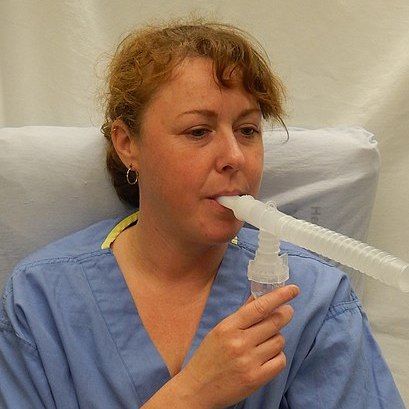Nebulizers Linked to Environmental Bacterial Contamination
New ASM data show indoor environments are associated with quick and frequent pathogen contamination of the common respiratory device.

Nebulizers, a standard treatment device for patients with chronic respiratory disease including asthma, are susceptible to major bacteria pathogen contamination, as well as microbiomes attributed to their surrounding environments.
The findings, presented at the American Society of Microbiology (ASM) 2021 World Microbe Forum this week, define concerning risks of bacteria infection associated with the common inhalation therapy among a growing population of American patients.
A team of University of Tennessee investigators, led by Clifford S. Swanson, of the Department of Civil and Environmental Engineering, sought to determine colonized bacteria trends among nebulizer devices, as well as the potential sources of such contamination.
As they noted, previous research into the matter showed various pathogens have colonized nebulizers over a relatively short period of patient use—but without associated increased risk of contamination over time of use.
“The use of nebulizer devices are ubiquitous with the treatment of respiratory illnesses, where medicines are delivered to deep within the respiratory tract via aerosolization,” Swanson and colleagues wrote. “A major concern with these devices, however, is the potential contamination by microbial pathogens as it would elevate the risk of nosocomial infections for the patient.”
Their assessment included adult in-patients admitted to the University of Tennessee Medical Center, who used jet nebulizers for respiratory diseases. The team collected 2 nebulizers, each within 24-48 hours of use, from in-patients to be treated as replicates for each patient.
One nebulizer was collected for use in bacterial abundance quantification via heterotrophic plate counts (HCPs), while the other was used for future 16S rRNA amplicon sequencing.
Taxonomy of the average collected nebulizer showed the major Phyla included Proteobacteria and Firmicutes—both of which consist of environmental bacteria and potential pathogens. The 10 top taxonomic groups observed by investigators indicated the most abundant bacteria typically includes Stenotrophomonas, Streptococcus, Staphylococcus, and Rhizobium. The groups include major environmental and human microbiome bacteria.
Source tracking software helped indicate that indoor environments comprised more than 40% contribution to contamination of nebulizers, followed by significantly lower rates of skin, oral, and gut source contributions.
Investigators concluded in their assessment of bacterial nebulizer device contamination that major bacteria could include potential pathogens included Stenotrophomonas maltophilia, Burkholderia cepacian, and Pseudomonas aeruginosa.
“It also revealed that there was a significant amount of microbiome that could be attributed to the surrounding environment instead of humans,” investigators concluded. “This study revealed the potential concerns that some of the colonizing bacteria pose with these nebulizer devices.”
